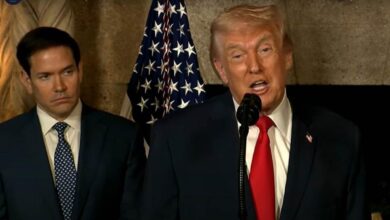How will work the new transpacific agreement?
Listen this article
With strong Latin American participation, the new Trans-Pacific Economic Cooperation Agreement is the birth of the largest free trade zone in the world

The Trans-Pacific Economic Cooperation Agreement, which was born in February 2016, included the participation of 12 countries with coasts in the Pacific Ocean and aimed to create the largest free trade zone in the world among its members. However, at the beginning of the administration of Donald Trump, the United States, a key member of the agreement, announced his retirement, which for many analysts could have meant the death of the ambitious commercial alliance.
Leer en español: ¿Cómo funcionará el nuevo acuerdo transpacífico?
Despite this, the remaining 11 countries continued negotiations, resulting in the signature of TPP-11 in March 2018 and its entry into force on December 30, 2018.
What changed in the new agreement?
The agreement, now known as the Integral and Progressive Treaty for the Trans-Pacific Partnership (CPTPP), remains largely the same as the original agreement. The exception is 20 'suspended provisions': clauses introduced by the United States before its withdrawal from the treaty that now are not mandatory, and that modify issues such as the handling of intellectual property.
But the withdrawal of the United States means that this treaty plays a fundamentally different role than it would if the world's leading economy continued to be involved.
Through the original TPP, the countries of the Pacific littoral would be strengthening links with each other, but the participation of the United States would also mean that the signatory States would be reducing their dependence on China, which in cases like Malaysia, Vietnam and Singapore, is considerable. Instead, they would be strengthening ties with the United States, which would obtain a very significant commercial advantage by isolating China from some of its neighboring markets.
Now, without the geostrategic role that the agreement with the American participation acquired, the CPTPP regains its commercial character and its emphasis on the development and opening of markets.
Also read: Who wins with the FTA agreement between Chile and Brazil?
What can expect Latin America countries?
Currently, among the Latin American countries, the treaty has only entered into force for Mexico. For Peru and Chile, the other two countries in the region that are part, the treaty should be in force throughout 2019, as their respective governments advance the ratification process.
At first, Mexico’s Ministry of Economy highlights the huge market that opens with the signing of the treaty. The participation opens a market of 10,6 trillion dollars, which represents more than 13% of the world gross domestic product.
Similarly, for Mexico, the entry into force of the treaty represents a huge challenge. Because if it does not strengthen competitiveness, the country could see how many of its industries weaken before an external competition, capable of producing the same goods at a lower unit cost.
According to José Luis de la Cruz, general director of the Institute for Industrial Development and Economic Growth, Mexico's challenge will be the introduction of industrial public policies that protect the sectors at stake, particularly textiles and footwear, from external competition.
The important thing for Mexico, then, is not to resort to tariff protectionism, but to promote from within the productivity and competitiveness of local industries so that they are able to compete with others like Vietnamese, a source of concern for Mexican industrialists.
Some forecasts continue to show a positive balance for Mexico. According to the Peter Institute for International Economics, the impact of the CPTPP will represent a 1.5% increase in GDP in 2030.
For Peru and Chile, a valuable opportunity
For Peru and Chile, the agreement that enters into force represents an opportunity to intensify existing trade links with Asia. On the one hand, Chile already carries out 40% of its commercial exchanges with the Asian continent, and on the other, Peru already has trade agreements in force with some of the largest participants in the agreement, including Japan, Singapore, and Thailand. For both, however, the agricultural sector represents a key differential.
Although Peru's main exports are copper, gold, and fish, this Andean country can now enter the Asian market importing products that distinguish its economy from others with which the Asian continent is closely related. According to the BBC, grapes, avocados, mango and quinoa will be the sectors that would benefit most from the treaty.
For Chile, three of its main trading partners will now see their relationship strengthened by the treaty, this added to a new commercial relationship with Japan, Canada, and Vietnam, will expand their access to international markets considerably. According to Felipe Lopeandía, Chilean chief negotiator at the CPTPP, the Chilean GDP could grow by 1% because of the participation in the agreement.
LatinAmerican Post | Pedro Bernal
Translated from: '¿Cómo funcionará el nuevo acuerdo transpacífico?'





